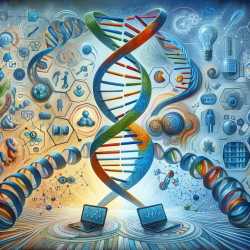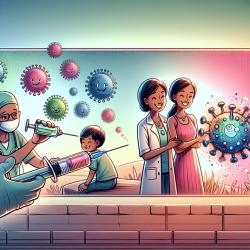Introduction
As practitioners dedicated to improving the lives of children with Autism Spectrum Disorder (ASD), staying informed about the latest research is crucial. A recent study titled Disruption of contactin 4 in three subjects with autism spectrum disorder sheds light on the genetic underpinnings of ASD and offers valuable insights that can inform our therapeutic approaches.
The Role of CNTN4 in ASD
The study identifies disruptions in the contactin 4 (CNTN4) gene in three individuals with ASD. CNTN4 is an axon-associated cell adhesion molecule crucial for the formation, maintenance, and plasticity of neuronal networks. The research highlights how genetic variations in CNTN4, specifically copy number variations (CNVs), may contribute to the pathogenesis of ASD.
Key Findings
- Three subjects with ASD were found to have CNVs affecting the CNTN4 gene.
- The CNVs were inherited from fathers without ASD, suggesting incomplete penetrance.
- These genetic variations were validated using fluorescence in situ hybridization (FISH) and other molecular techniques.
- The study suggests that disruptions in CNTN4 could lead to neurodevelopmental issues associated with ASD.
Implications for Practitioners
Understanding the genetic factors contributing to ASD can enhance our therapeutic strategies. Here are some ways practitioners can leverage this research:
- Personalized Interventions: Recognizing the genetic diversity in ASD can help tailor interventions to individual needs, potentially improving outcomes.
- Family Education: Educating families about the genetic aspects of ASD can empower them with knowledge and help them make informed decisions.
- Collaboration with Geneticists: Collaborating with geneticists can provide a more comprehensive understanding of each child's unique genetic makeup.
Encouraging Further Research
While this study provides significant insights, it also opens the door for further research. Practitioners are encouraged to stay engaged with ongoing studies and consider participating in research initiatives. By doing so, we can contribute to a deeper understanding of ASD and the development of more effective interventions.
Conclusion
The disruption of the CNTN4 gene in individuals with ASD underscores the importance of genetic research in understanding and addressing the complexities of this disorder. As practitioners, integrating these insights into our practice can lead to more personalized and effective therapeutic approaches, ultimately enhancing outcomes for children with ASD.
To read the original research paper, please follow this link: Disruption of contactin 4 in three subjects with autism spectrum disorder.










